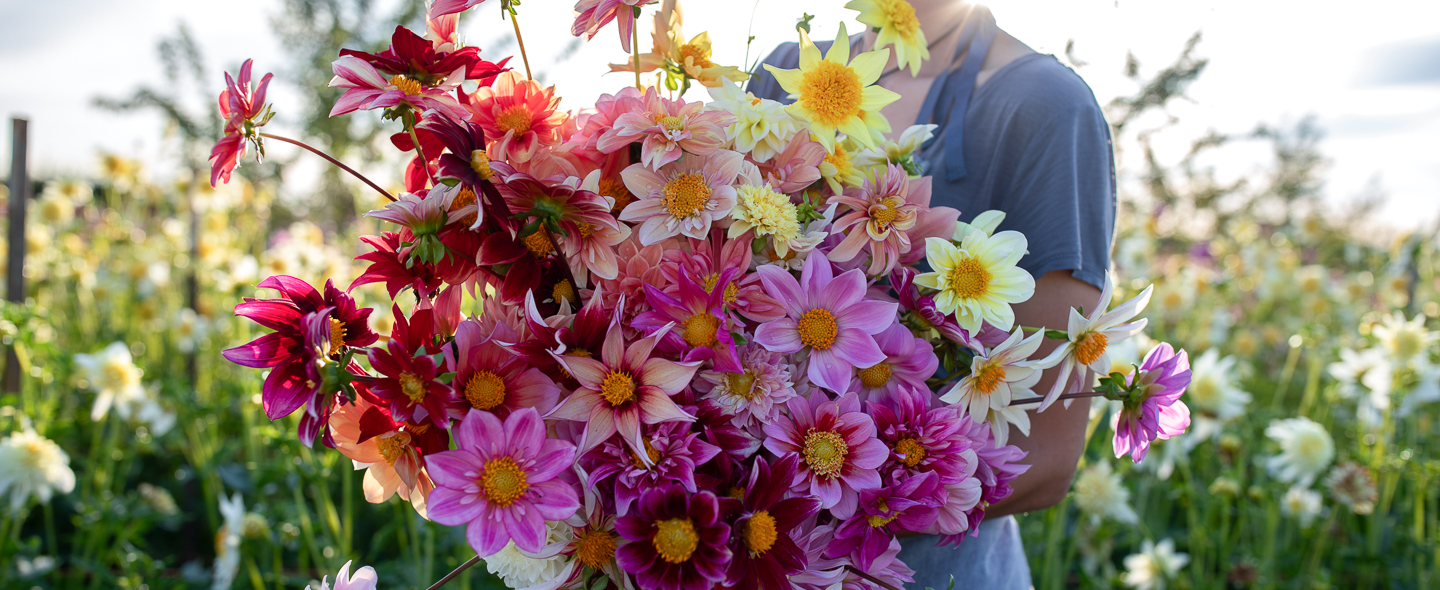How to Grow Dahlias from Seed
One of the most exciting and surprising discoveries I made on my dahlia-growing journey was learning how new varieties were created.
Unlike tubers or cuttings, which produce an exact clone of the plant they come from, dahlias grown from seed offer a treasure trove of new possibilities, each one something that’s never existed before.
The opportunities are endless, and if you find one you love, you get to name it!
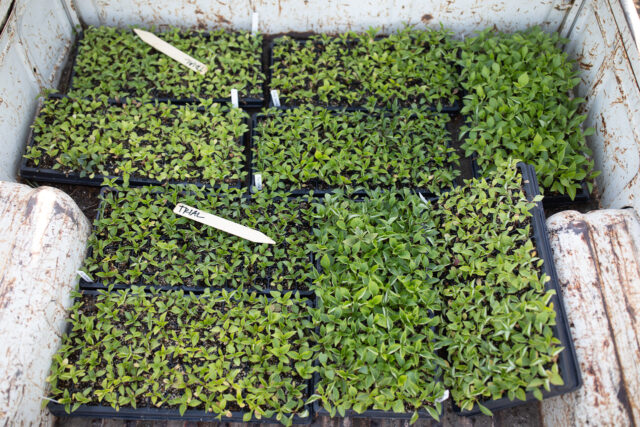 Dahlia seedlings are extremely cold sensitive, so don’t plant them outside until the weather has sufficiently warmed. We typically transplant them 3 to 4 weeks after our last spring frost.
Dahlia seedlings are extremely cold sensitive, so don’t plant them outside until the weather has sufficiently warmed. We typically transplant them 3 to 4 weeks after our last spring frost.
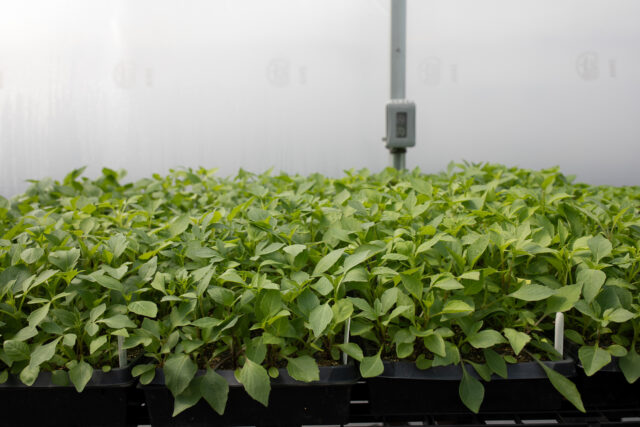 Seeds should be started indoors at least 4 to 8 weeks before you want to plant them out. Dahlia seeds germinate sporadically, so be patient—they will come up but it can take up to two weeks. Direct-seeding into the garden isn’t recommended.
Seeds should be started indoors at least 4 to 8 weeks before you want to plant them out. Dahlia seeds germinate sporadically, so be patient—they will come up but it can take up to two weeks. Direct-seeding into the garden isn’t recommended.
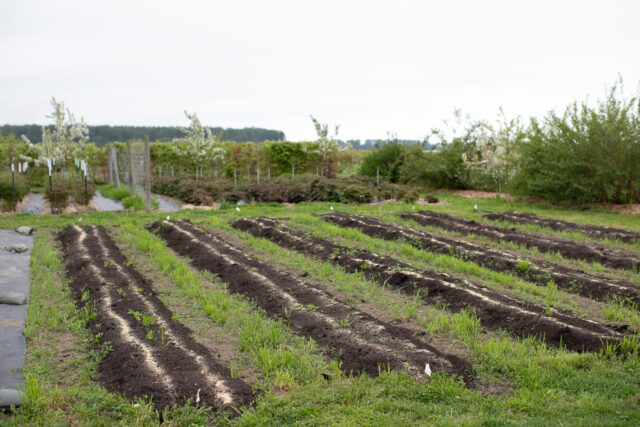 Dahlias do best in rich, heavily amended soil. We prepare planting beds with a generous dose of compost and organic fertilizer and then install drip irrigation. Learn more about soil preparation here.
Dahlias do best in rich, heavily amended soil. We prepare planting beds with a generous dose of compost and organic fertilizer and then install drip irrigation. Learn more about soil preparation here.
Although they can handle the heat of summer, we recommend providing some afternoon shade in extremely hot climates.
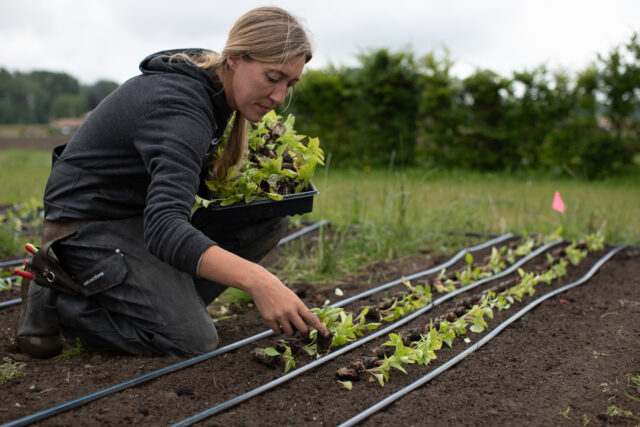
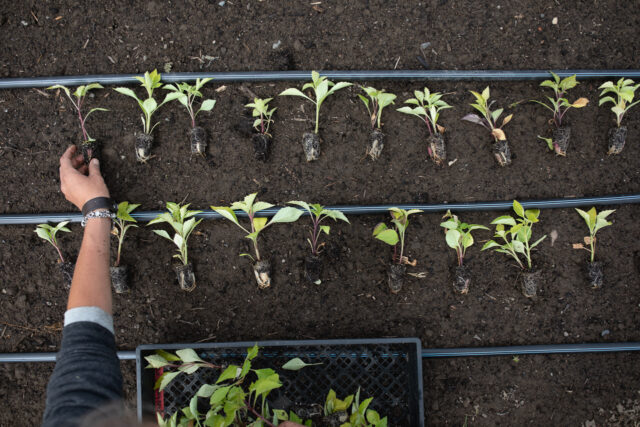 Space plants 12 in (30 cm) apart and water deeply twice a week. (Dahlia seedlings can be grown much closer together, with as little as 4 in [10 cm] between plants. This method will produce a jungle of towering stems and is how most professional breeders increase the number of seedlings they can grow in a season.)
Space plants 12 in (30 cm) apart and water deeply twice a week. (Dahlia seedlings can be grown much closer together, with as little as 4 in [10 cm] between plants. This method will produce a jungle of towering stems and is how most professional breeders increase the number of seedlings they can grow in a season.)
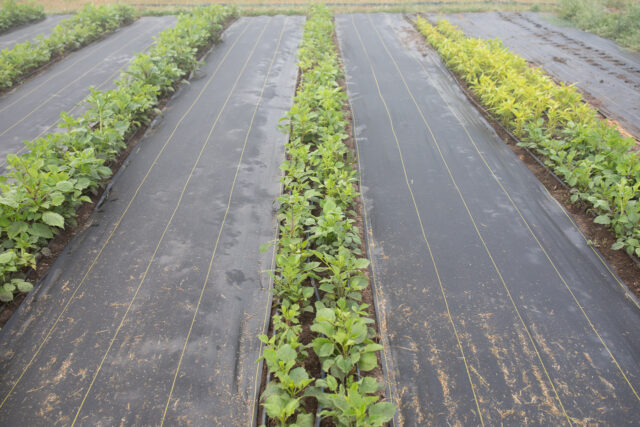 Slugs and snails love tender dahlia seedlings. We apply Sluggo immediately after transplanting to protect them while they get established.
Slugs and snails love tender dahlia seedlings. We apply Sluggo immediately after transplanting to protect them while they get established.
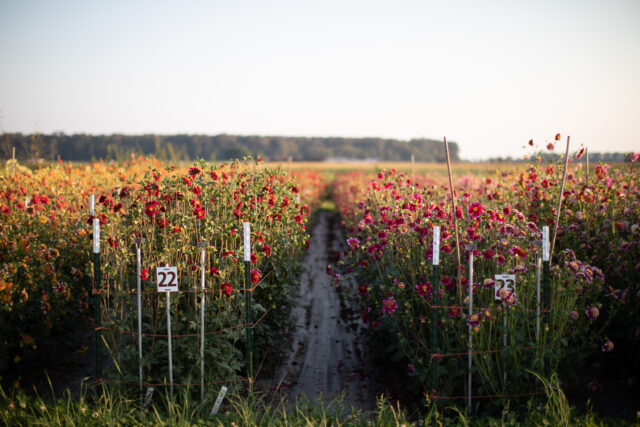 Plants inevitably grow tall and heavy and will require sturdy staking, which should be placed before they grow too large and topple over from the weight of their showy blossoms.
Plants inevitably grow tall and heavy and will require sturdy staking, which should be placed before they grow too large and topple over from the weight of their showy blossoms.
If you’re growing dahlias in garden beds, you can pound individual stakes next to each seedling at planting time and tie them up as they grow.
If you’re planting in long rows, plants can be corralled and held upright by pounding heavy stakes or T-posts around the perimeter of the bed and creating a string-lined box using bailing twine.
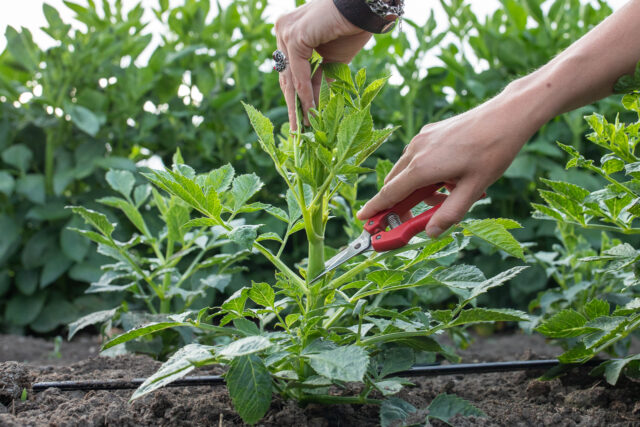 To increase the overall number of flowers and encourage long, strong stems, you’ll want to pinch them. Once plants are 8 to 12 in (20 to 30 cm) tall, use sharp pruners to snip off the top 3 to 4 in (7 to 10 cm), just above a set of leaves. This causes the plant to send up multiple stems below the cut.
To increase the overall number of flowers and encourage long, strong stems, you’ll want to pinch them. Once plants are 8 to 12 in (20 to 30 cm) tall, use sharp pruners to snip off the top 3 to 4 in (7 to 10 cm), just above a set of leaves. This causes the plant to send up multiple stems below the cut.
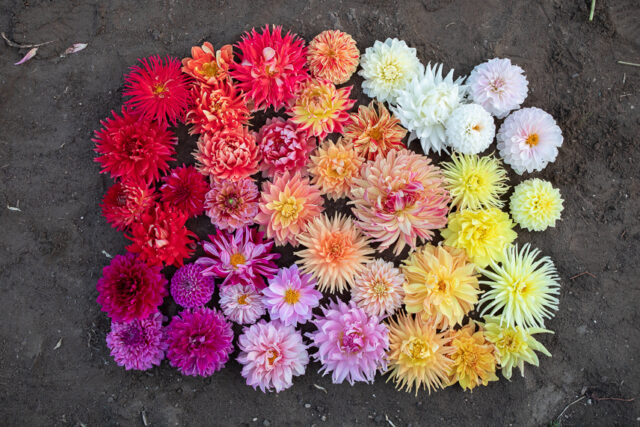 Unless you’re leaving seedpods to mature for breeding purposes, remove spent blooms often so the plants put their energy into flower production rather than making seed.
Unless you’re leaving seedpods to mature for breeding purposes, remove spent blooms often so the plants put their energy into flower production rather than making seed.
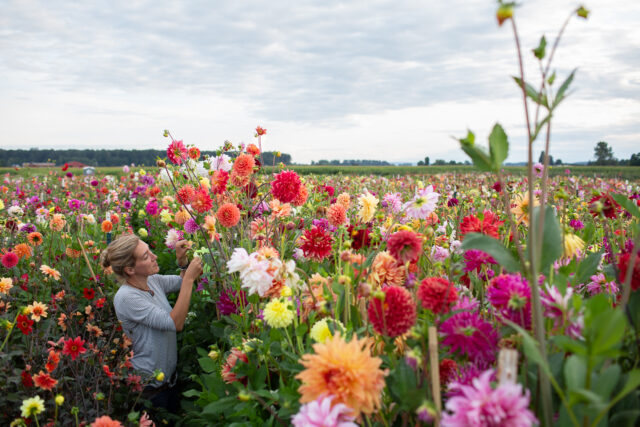 If you discover varieties you love, you can dig them up at the end of the season to replant the following year.
If you discover varieties you love, you can dig them up at the end of the season to replant the following year.
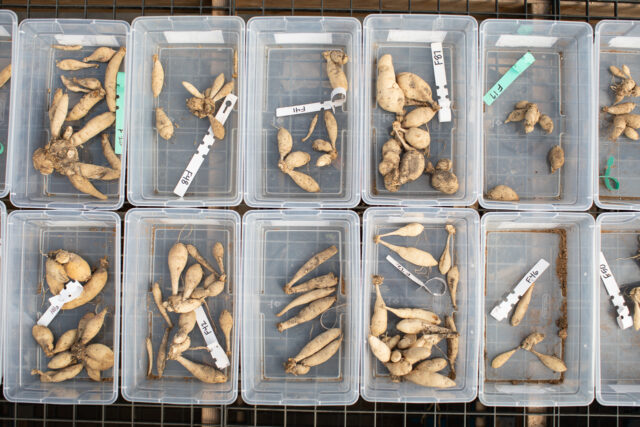 Dahlias grown from seed produce miniature clumps of tubers that are often not big enough to divide, so we store the entire bundle in a Ziploc bag filled with peat moss or vermiculite in a cool place that doesn’t freeze, between 40°F and 50°F (4°C–10°C).
Dahlias grown from seed produce miniature clumps of tubers that are often not big enough to divide, so we store the entire bundle in a Ziploc bag filled with peat moss or vermiculite in a cool place that doesn’t freeze, between 40°F and 50°F (4°C–10°C).
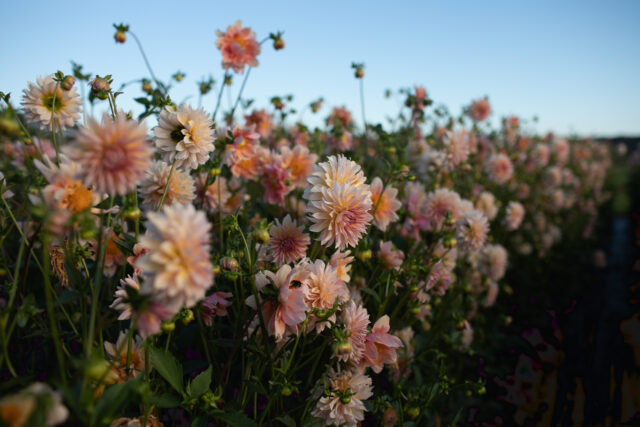 Dahlias are not terribly long-lasting cut flowers, but you can get about 5 days by picking at the right stage and using floral preservative. Dahlias won’t unfurl much after harvesting, so pick when they are almost fully open for large, full blooms.
Dahlias are not terribly long-lasting cut flowers, but you can get about 5 days by picking at the right stage and using floral preservative. Dahlias won’t unfurl much after harvesting, so pick when they are almost fully open for large, full blooms.
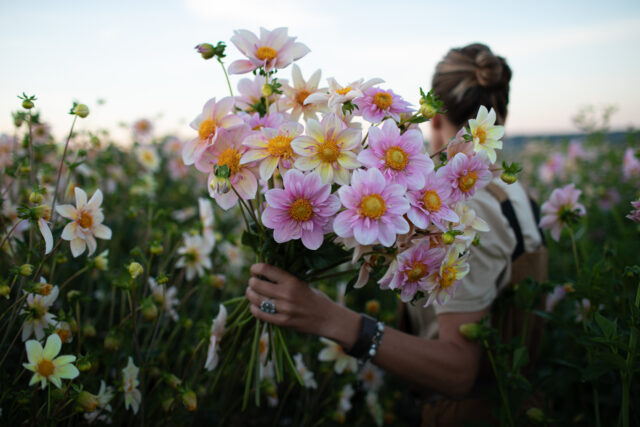 For singles and other open-centered varieties, pick just as the petals are unfurling and before the bees get to them.
For singles and other open-centered varieties, pick just as the petals are unfurling and before the bees get to them.
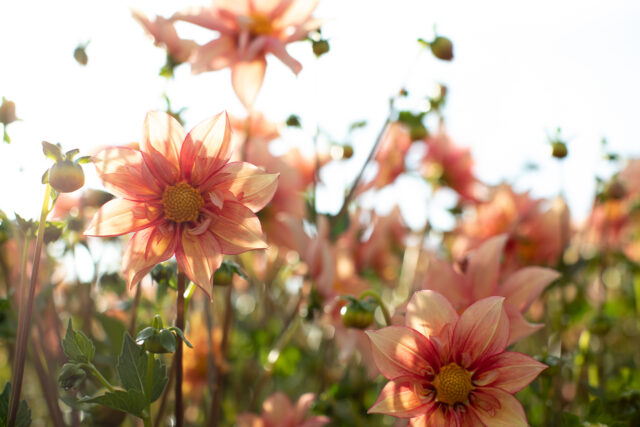 If you haven’t grown dahlias from seed, I highly encourage you to give it a try—it’s the ultimate treasure hunt.
If you haven’t grown dahlias from seed, I highly encourage you to give it a try—it’s the ultimate treasure hunt.
I’d love to hear about your experience with dahlias grown from seed and some of the discoveries you’ve made in your garden.
Please note: If your comment doesn’t show up right away, sit tight; we have a spam filter that requires us to approve comments before they are published.

